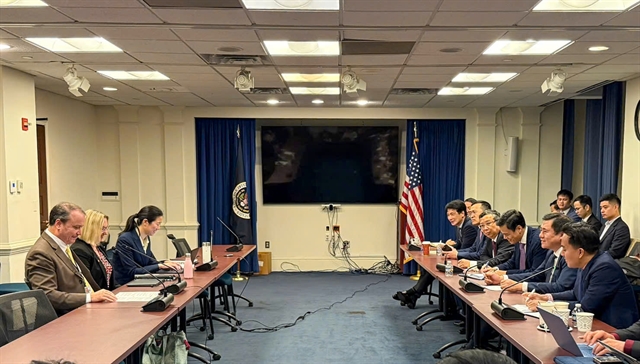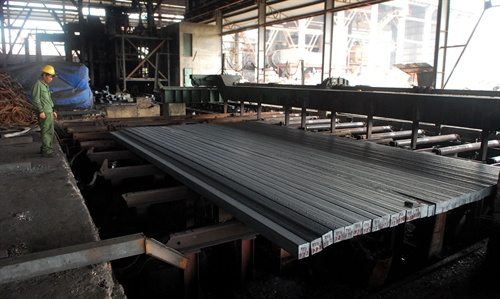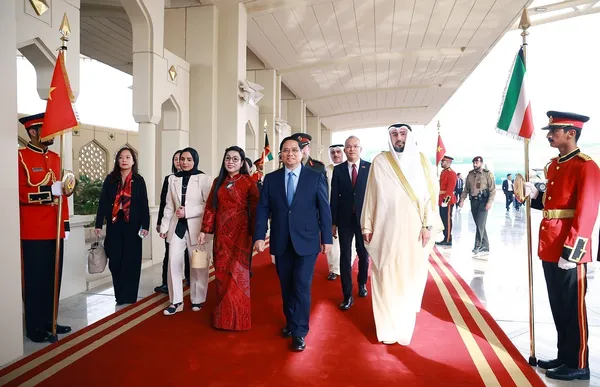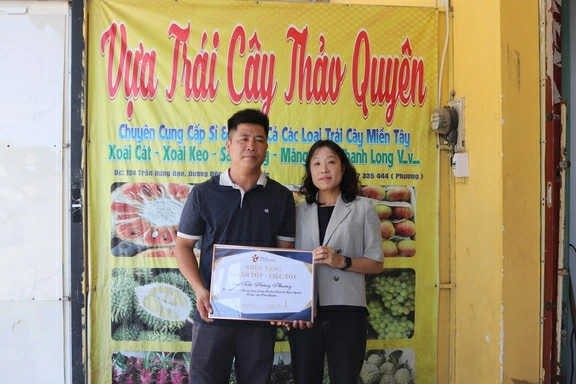 Economy
Economy

The application of trade defence instruments must ensure harmonisation of interests between producers and consumers in the long term, Hồ Nghĩa Dũng, president of the Việt Nam Steel Association said.
 |
| A worker of Toàn Thắng Steel JSC supervises steel billet production at the Sông Công I Industrial Zone in Thái Nguyên Province. — VNA/VNS Photo Danh Lam |
HÀ NỘI– The application of trade defence instruments must ensure harmonisation of interests between producers and consumers in the long term, Hồ Nghĩa Dũng, president of the Việt Nam Steel Association said.
Dũng wrote in an article to the Việt Nam News Agency that local producers must revamp their production technology to build a competitive industry.
Although trade defence instruments were essential to protect local production, the use of these instruments might result in inefficiency if it failed to balance the interests of the relevant parties, he added.
Dũng said trade defence instruments might cause a conflict of interest which had been proved through the recent use of safeguard duties on imported steel products.
For example, producers who manufactured steel ingots might support the imposition of duties, while those importing cheap steel ingots for their production and consumers who pay higher prices, might oppose the policy.
The Ministry of Industry and Trade in early March announced a decision to issue temporary safeguard duties of 23.3 per cent on steel billets and 14.2 per cent on steel bars for a maximum of 200 days.
“In the short term, producers should share the benefits,” Dũng said.
In the long term, Dũng said trade defence instruments were just passive protective measures, urging steel firms to renovate production technologies to be able to actively compete with low-priced imported steel, especially from China, the world’s top steel producer, which was facing excess capacity and ramping up exports in recent years.
The aim was to develop a competitive industry through the application of modern production technologies, he wrote, and added that the in-force safeguard duties were offering opportunities for local producers to renovate their production and hasten restructuring to lower price and enhance quality.
The Việt Nam Competition Authority will host a public consultation meeting on May 5 on the duties imposed on imported steel.
The local steel industry must find ways to ensure development amid a global steel overcapacity crisis that China and other major steel producing countries were struggling to tackle.
According to Dũng, after a decade of rapid development, Việt Nam currently ranked second by production capacity in the Southeast Asia, after Thailand, with a total annual production capacity of more than 20 million tonnes.
However, the association’s statistics showed that the industry currently operated at only 55 per cent of capacity, due to declining demand, competition from cheap steel products imported from China, and trade frauds.
Regarding exports, Việt Nam steel producers often faced trade barriers set by importing countries, according to Dũng, citing 12 trade defence-related lawsuits the industry faced in 2015 alone, while the use of trade defence instruments were still new to local producers.
Dũng said local producers must join hands to stabilise the domestic market and be able to compete in the global market.
According to Nguyễn Phương Nam, deputy director of the Việt Nam Competition Authority, the co-ordination along with local producers from giants to small-scale firms and with the government relevant agencies, was critical for the success of trade defence instruments. – VNS




